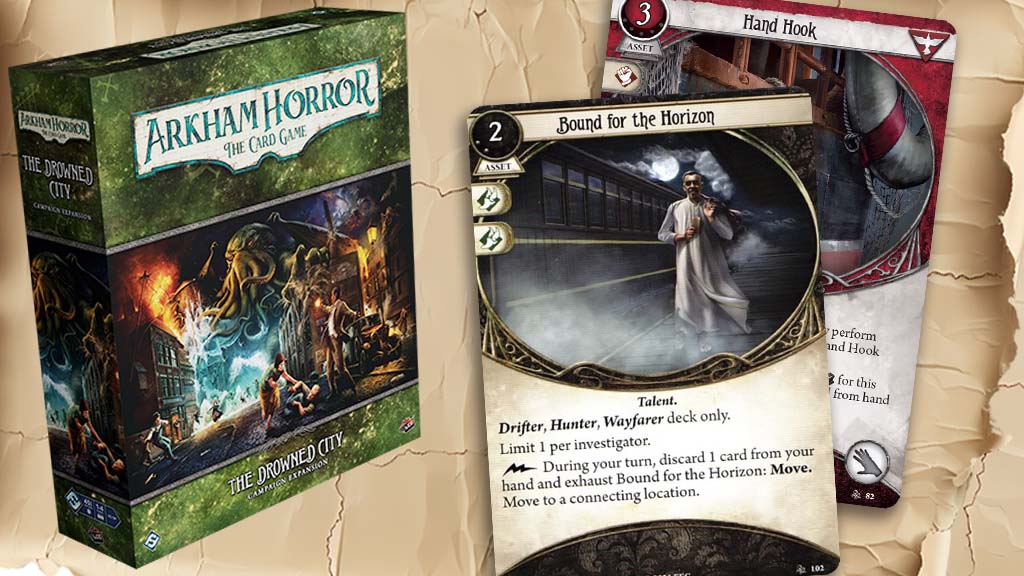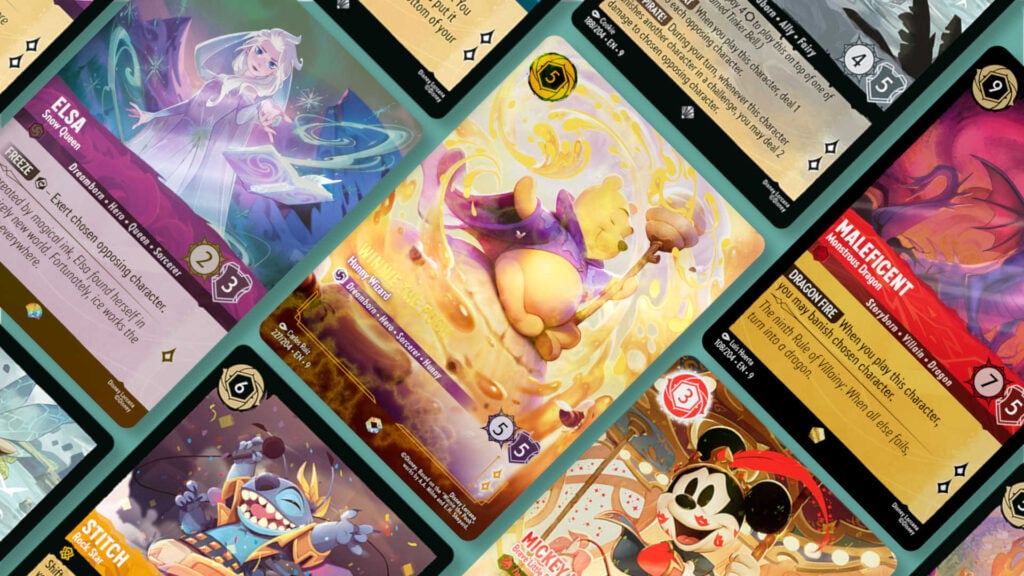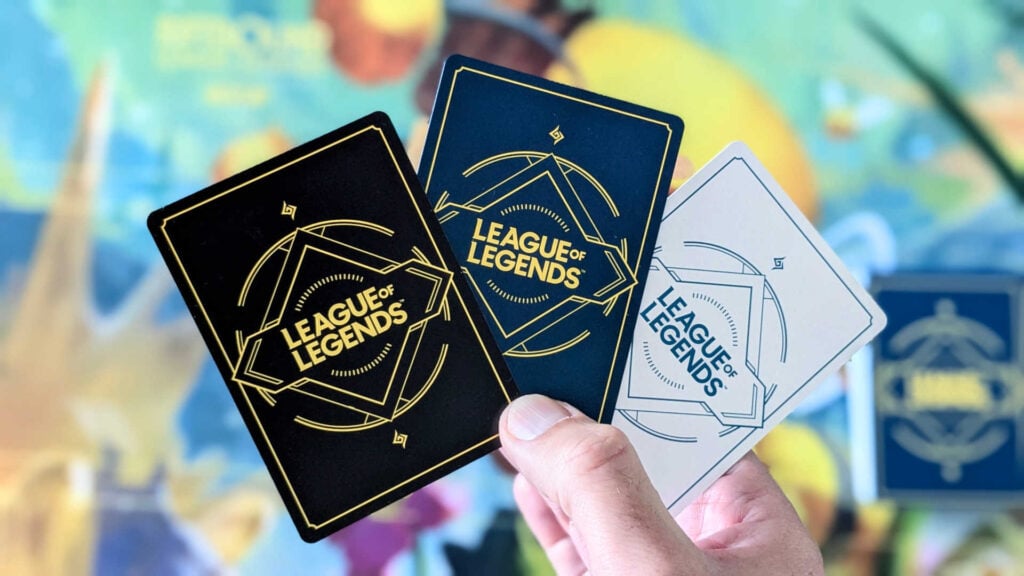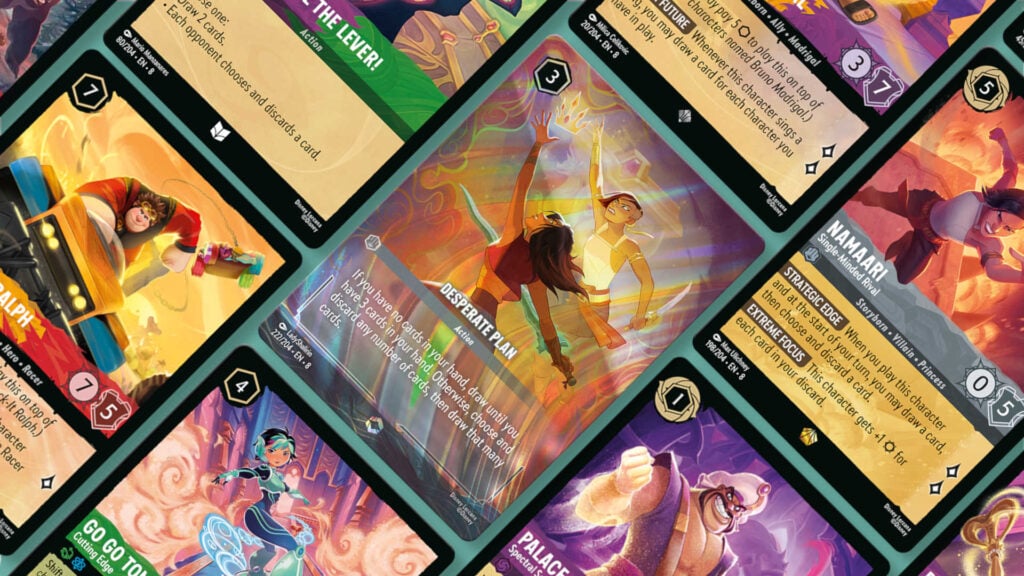Images courtesy of Fantasy Flight Games/author
The Drowned City is upon us, and Arkham Horror will never be the same. I think. Truth be told, I haven’t gotten my campaign box yet, so I can only go off the product description. All I really know is that Cthulhu has awakened and we have dozens of new player cards to help combat the unknowable ancient one. But included in these cards there is a suite of new neutral cards that are trait locked for specific investigators: the specialist cards.
My original intention for my first article on Arkham Horror was to highlight player cards that excited me, but with my attention split between the typical suite of cards and these new specialist cards, I was overcome with excitement. As such, this article will be broken into two parts. First up, cards that I’m simply excited to have in the existing card pool. And the second half is dedicated to the new specialist cards I foresee using specifically with my favorite investigators.
Table of Contents
ToggleCrowbar
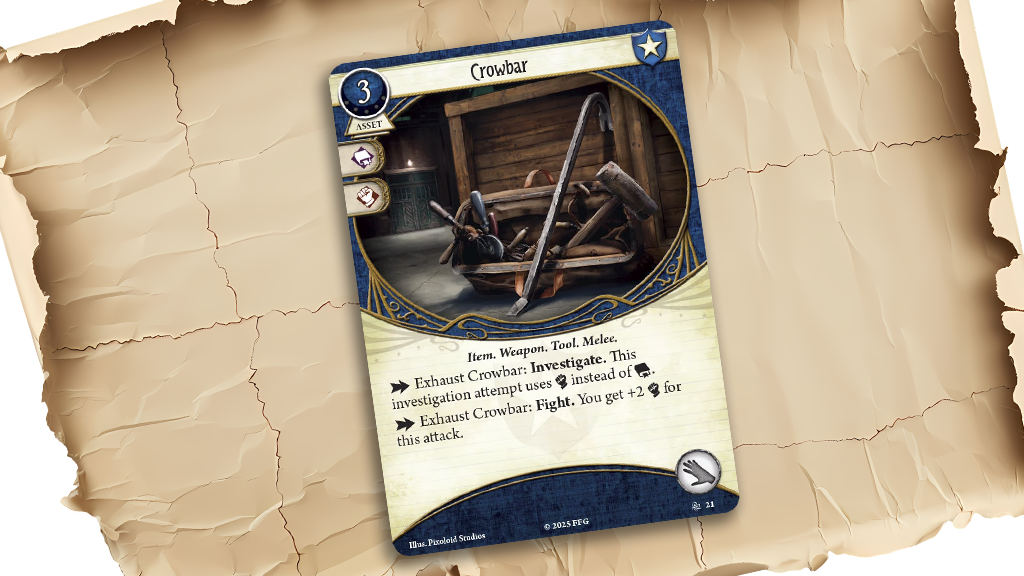
First up is the new Guardian asset: Crowbar. We’ve all been there; you’re playing The Pit of Dispair with Daniela Reyes or Nathaniel Cho and the Deep Ones haven’t spawned yet, but your team is required to find three clues per player. This is a golden chance to get ahead of the scenario, and your fighter has nothing to do. With Crowbar, you may not have the additional damage needed to efficiently strike down two- and three-health minions. But you have the additional option to at least try to nab clues, before the game really gets going.
While not a replacement for something like Butterfly Swords, during my Path to Carcosa run with Zoe Samaras, it would have allowed her access to limited investigation during slower moments of gameplay. That was a three-player game, with a fair amount of minions coming into play on regular basis. As such, Crowbar would have been a fine third action to take in the twilight turns of the game. But in lower player counts, I could see this being a great way to flex without ruining too much of the economy of your deck.
Hand Hook

I’ve definitely underestimated Survivor for quite a while. Having only now started a campaign with Will Yorick, I’m late to the party when it comes to their use of the discard pile. But the new trio of cards that allow you to activate the action ability from your hand has really gotten my gears turning. And Hand Hook is my favorite of these cards.
Fighting would not be the blind spot that I believe Survivor cards need to shore up. Nevertheless, the ability to make this card into a pseudo-event that allows you to getting an attack and some extra damage, without effecting hand slots, is something that I really want to try out.
Patrice Hathaway was the first investigator that came to mind when I saw Hand Hook, especially once she’s upgraded into Cornered. I typically have Sledgehammer taking up both her hand slots, and the idea of not relying on its first ability to get the additional one damage feels like a solid game plan. And at worst, if we’re using it as a Scavenging target, we always have the combat icon to rely on.
Blood of Thoth
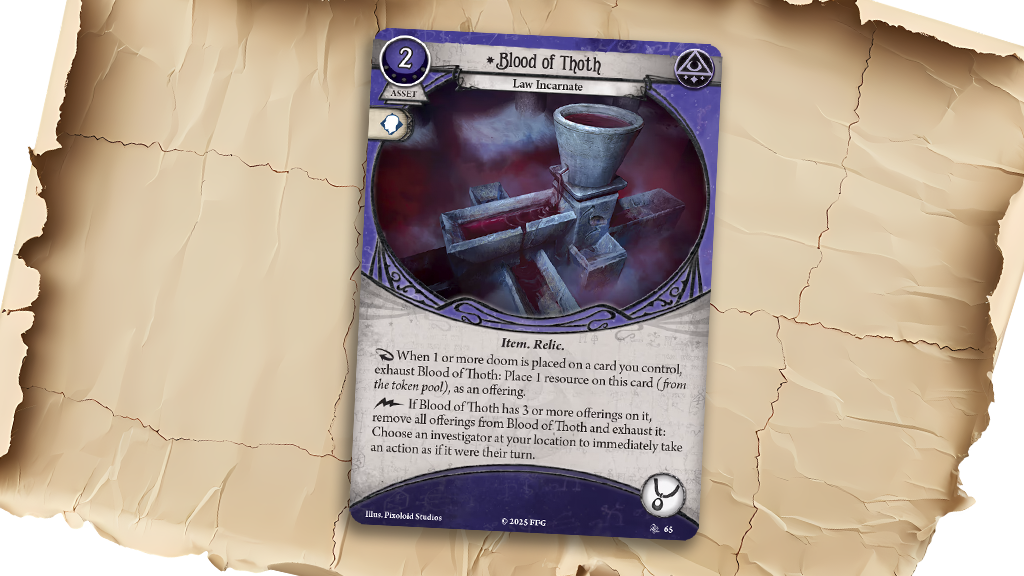
Since we were given Cat Mask last year, I’ve been trying to make adding doom to my assets something manageable. For every Arcane Initiate or David Renfield at level zero, there were always a host of payoff cards at four or five experience that I could never live through scenarios long enough to farm victory for. It made for grand plans with poor executions. Blood of Thoth may be the Mystic card I need to bring this vision together, starting at scenario one.
At first, I was hung up on envisioning the upper limits of Blood of Thoth and trying to be practical with how often we should expect to leverage an extra action. But the longer I thought about it, the more I kept coming back to the passive nature of the card. Yes, we can speed things up with Wicked Athame or Blood Pact. But we’re also supercharging the agenda and risking losing anywhere from three to twelve actions, all at once.
This risk/reward balance has me very excited for trying it out with Marie Lambeau or Amina Zidane, but I can also see the potential for shenanigans with Dexter Drake. Though it may only be in the context of a campaign I already know, because it sure feels dangerous in uncharted wilds.
Ascetic
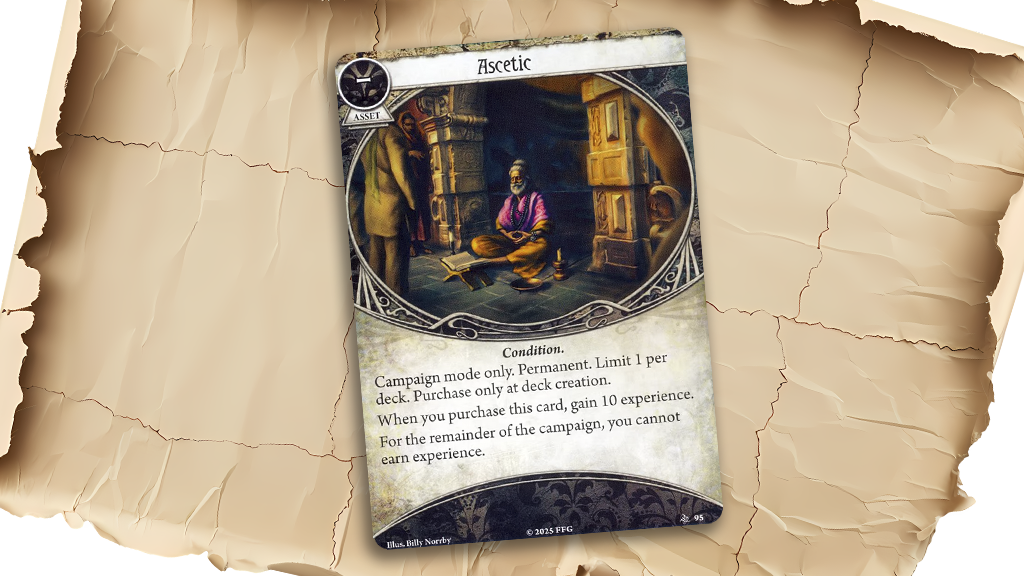
I know I’m not speaking for everybody when I say this, but sometimes campaigns are so difficult on a blind run that you’re lucky if you’ve accumulated 10 experience by the penultimate scenario. You have every intention of clearing the two locations with victory, but then you draw a minion that you fail an attack against and suddenly, you’re lucky if you have the actions left to evade and move out of the location before the doom clock ticks over.
Due to my own incompetence, I think that Ascetic is going to improve some of my most treacherous solo campaigns.
Make no mistake, this is a pretty ridiculous card to pick up in campaigns that you’re more accustomed to, as the ceiling on the amount of experience that you can get in the first couple scenarios is going to dwarf what this card is capable of doing for you very quickly. But in a challenge run setting, I see so much potential in allowing yourself a big boost to start with the understanding that your deck at creation is the best you’ll have for the entirety of the campaign.
Alton O’Connell
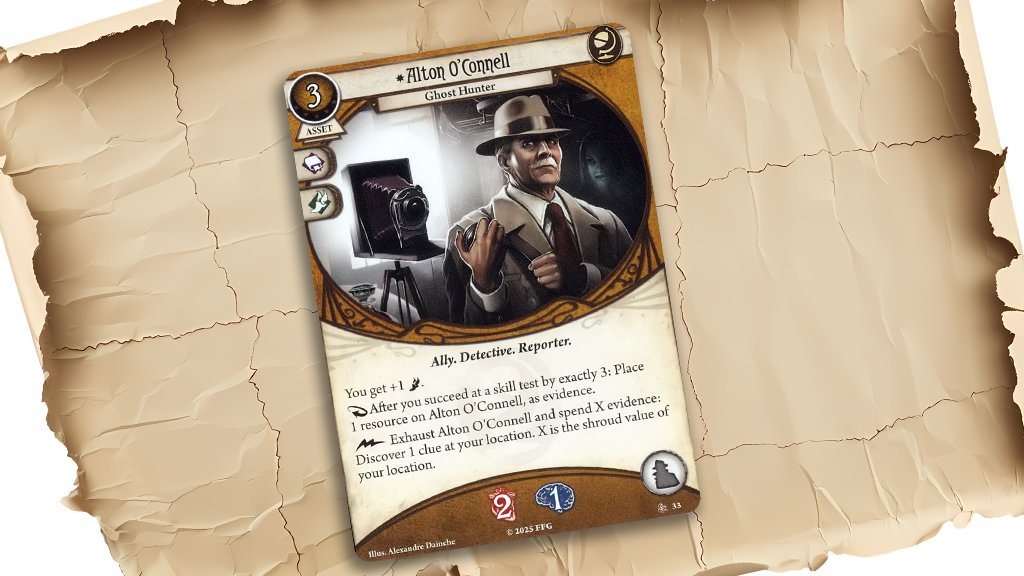
I probably have more experience with Seeker cards than any other class in Arkham Horror. With that, I certainly see the downsides of an ally like Alton O’Connell. But with the tools that we were given during The Feast of Hemlock Vale, I have to wonder if a deck built around succeeding investigate tests by a specific amount will result in Alton allowing you to gather more clues without taking tests than I originally estimated.
Let’s also not ignore the boost in agility that he grants. There are investigators that are very good at investigate tests and evading enemies; that’s one of my favorite perks to Ursula Downs and Kate Winthrop. But it sure feels like that’s a blind spot that a lot of Seeker investigators have that would really be shored up by a consistent extra point in agility.
This is maybe the card that I’m most willing to admit may land with a thud from today’s list. But with such a wide card pool available, I have to wonder if this could prove to be a hidden gem a few years from now.
Making Traits Matter
As somebody who’s playing a multitude of card games where the subtype of a card matters, it’s actually astonishing to me that Arkham Horror has existed for as long as it has and that the traits on investigators have been largely trinket text. This is why the specialist cards have really captured my attention, making me reevaluate some of my favorite investigators and taking notice of the traits they do and do not have.
For each of the following cards, I have a specific investigator in mind that I want to take for a spin with this new suite of cards.
Bound for the Horizon
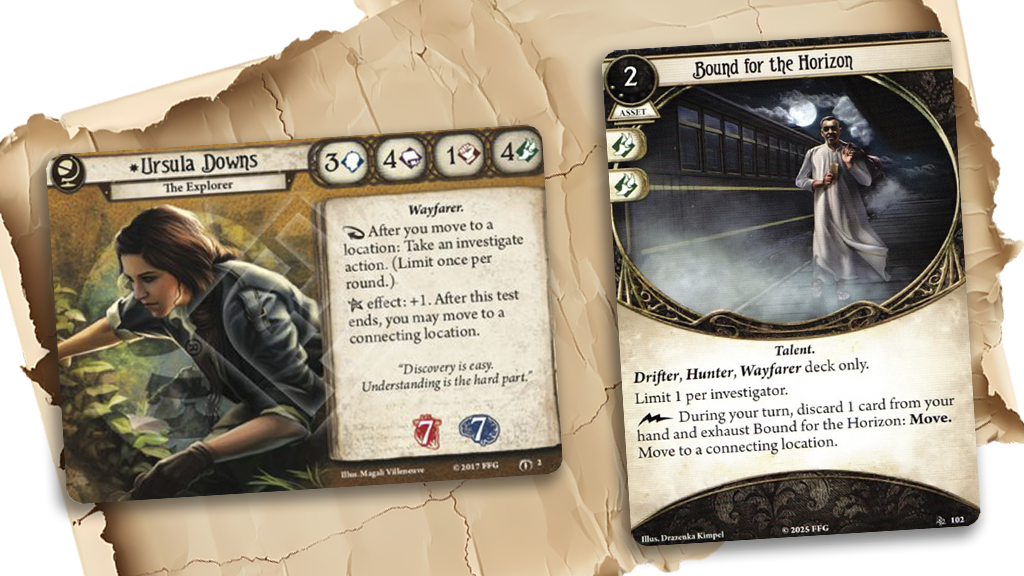
Ursula Downs is a personal favorite investigator that gets a bad wrap. It might be that my list of completed campaigns still comes in under two dozen, but I haven’t reached the point of maximizing action economy as a chief concern. For more veteran players in the community, the Move action is often viewed as the most useless thing that you can do in a turn. Ursula is very dependent on Move actions from one location to another, and her reaction ability doesn’t scale to a larger number of players. I understand the criticism.
Through Bound for the Horizon, I see the best parts of both level zero and level two Shortcut. In the right situations, we’d be able to effectively investigate a location four times in a turn, which helps to make up for the player imbalance mentioned above. And in a solo setting, Bound for the Horizon grants forgiveness during the turns when we fail an evade test and need to make a second attempt, escaping danger and surviving the encounter.
Double Down
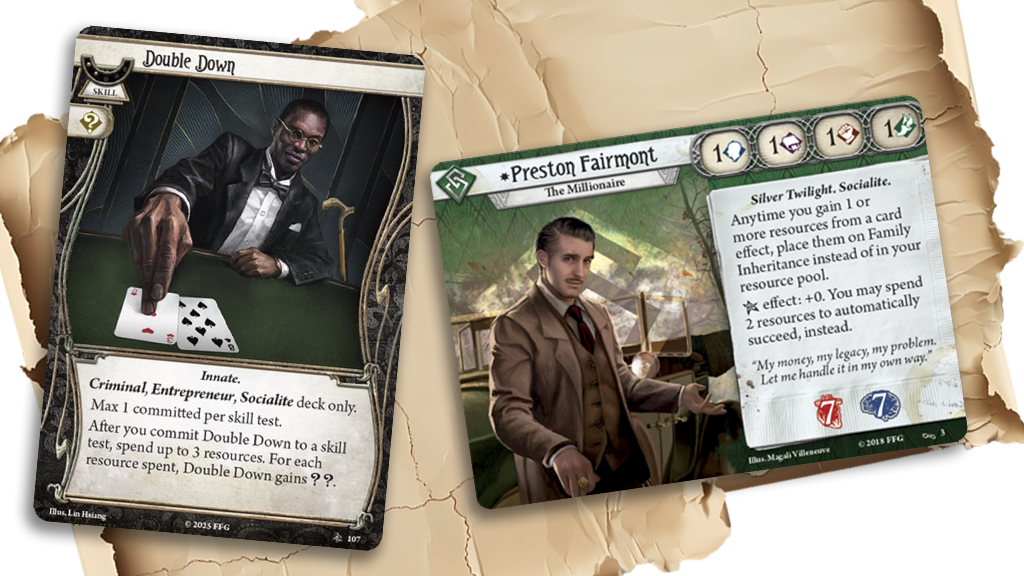
Easily the silliest card on the list. I love that specialist cards even included Skills. There is very little doubt in my mind that the designers had Preston chief of mind when they designed Double Down. Obviously, you put a trait on pointing directly to him, but there is no investigator who’s going to just be flush with cash like millionaire Preston Fairmont.
I’ve had some pretty incredible scenarios piloting Preston, and at no point did I ever feel like I was wanting for much in the form of skill icons. Double Down is going to go so far in not only improving Preston, but probably improving other investigators that fit this trait that want to run a Lone Wolf style deck. If anything, this just extends his style of gameplay, where he’ll buy his way out of every problem he runs into, and that now includes committing skills.
Memories of Another Life
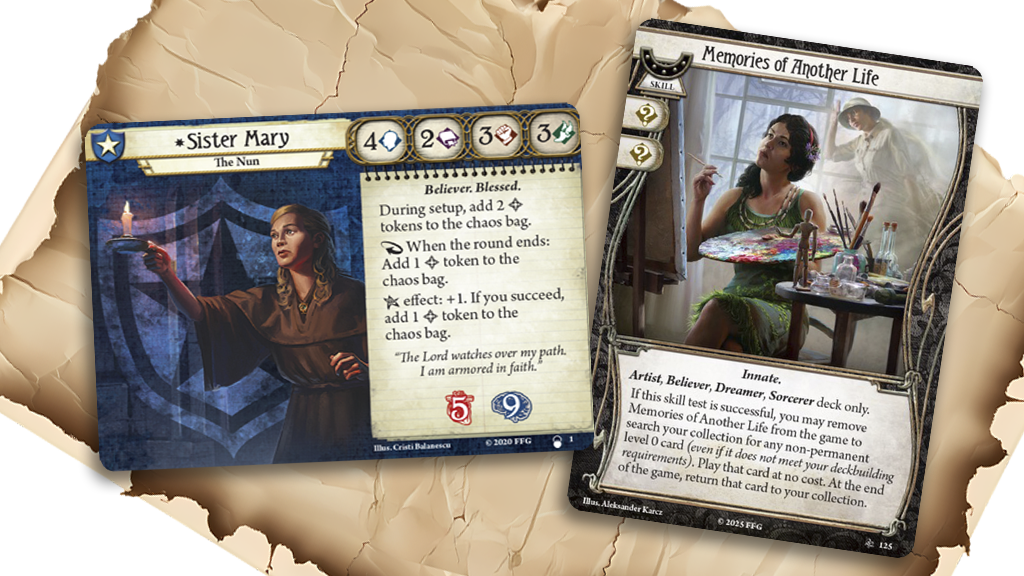
There are several investigators that will take advantage of Memories of Another Life, being able to pull in just about any level zero card without deckbuilding or cost in mind. Sister Mary is a favorite investigator of mine that I never get to work just the way I’d like. Seeing as she can deposit Blessed tokens into the chaos bag, she can naturally succeed at the critical test and pull in whatever tool box card she needs in the moment. Sometimes, all I’ve needed is Anatomical Diagrams just to help me stay alive.
Investigators are generally pretty balanced in their deckbuilding, including all the elements that generally support the stats they’re given. It’s important to remember that deckbuilding restrictions also act as power level capping. Memories of Another Life won’t allow you throw a level five card your investigator was never meant to meddle with, but a lot can be done with level zero cards.
Being able to grab common weapons like the Baseball Bat or Luger P08 is going to make memorable stories happen. And the possibilities once you factor in events make me almost go into decision paralysis, thinking about all the cross-faction options that could create these incredible corner cases.
True Awakening
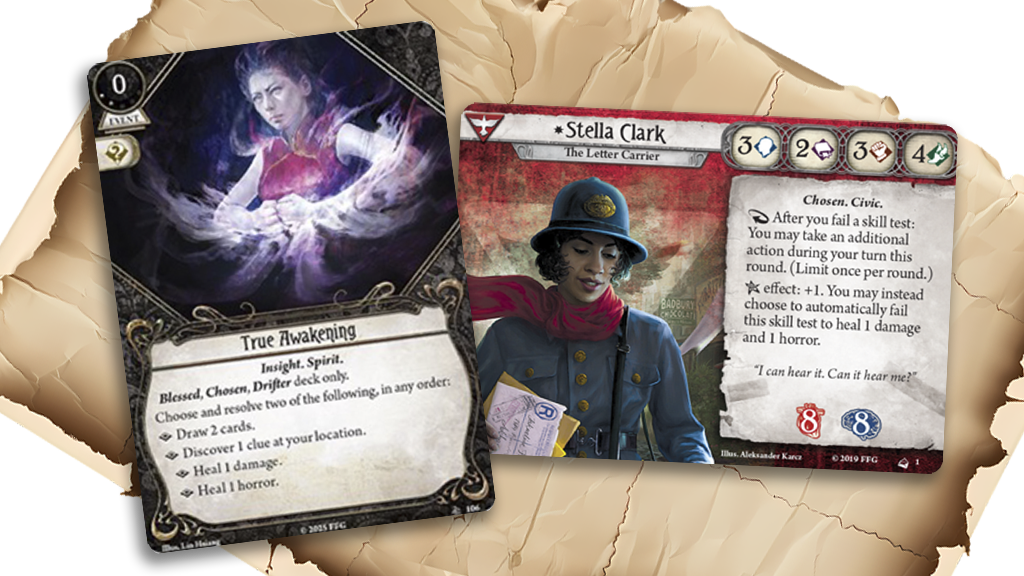
Stella Clark is an investigator that every new player should experience in their first two or three campaigns. She does a great job of making failing not feel as drastic, easing you into the troubling world of Arkham. And True Awakening is a card that is going to benefit her, especially in the Quick Learner archetype that Stella excels at.
This card will allow you to draw cards, nab clues without tests, or heal up, burning up an action and getting you to the later stages of your turn. I suspect it will also be impactful in Rogue investigators who can easily get access to extra actions, allowing you to circumvent investigation or heal up the low damage or horror that you have as an Achilles’ heel. It should be incredibly helpful, smoothing out scenarios in the back half of the campaign.
Dreams of the Clay
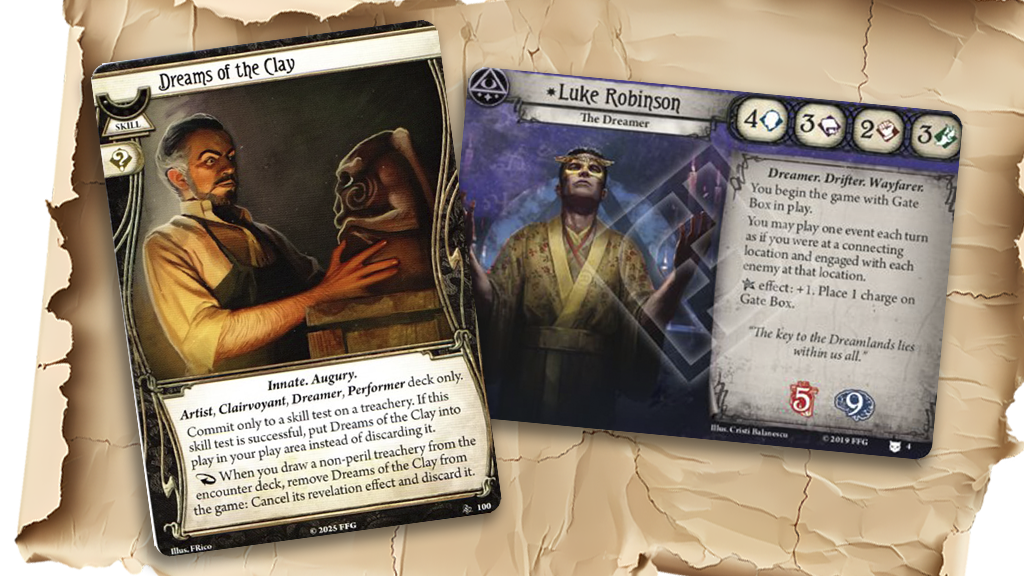
And finally, let’s talk about what we’re going to be doing with one of the most breakable characters in the game. I have yet to tap into the full potential of Luke Robinson, but seeing as he often doesn’t face much adversity, it felt important to give him Dreams of the Clay as protection against non-peril treacheries. Most importantly, this comes in the form of a skill card, meaning that it’s not going to cost us resources, but it’s also going to favor investigators who are able to pass treacheries with ease.
This feels like an effect that would be in a hero’s kit in Marvel Champions – a card that resets a hero to half or full health, in the event they lose all their hit points. The only set back, in my experience, with these cards is that sometimes they sit in play and you forget they’re there until the moment is already passed to utilize them. Luckily, sitting in the threat area should keep it more front of mind and allow you to plan any terrible Mythos phases around this being in your back pocket.
Thank you for joining me on this giant sized look into The Drowned City. This campaign has me excited to start my blind playthrough as soon as possible. And hopefully we can talk more about the twists and turns of the waking old one in the near future. As always, thanks for reading.
For more Living Card Game content, check out all my articles on Marvel Champions.

